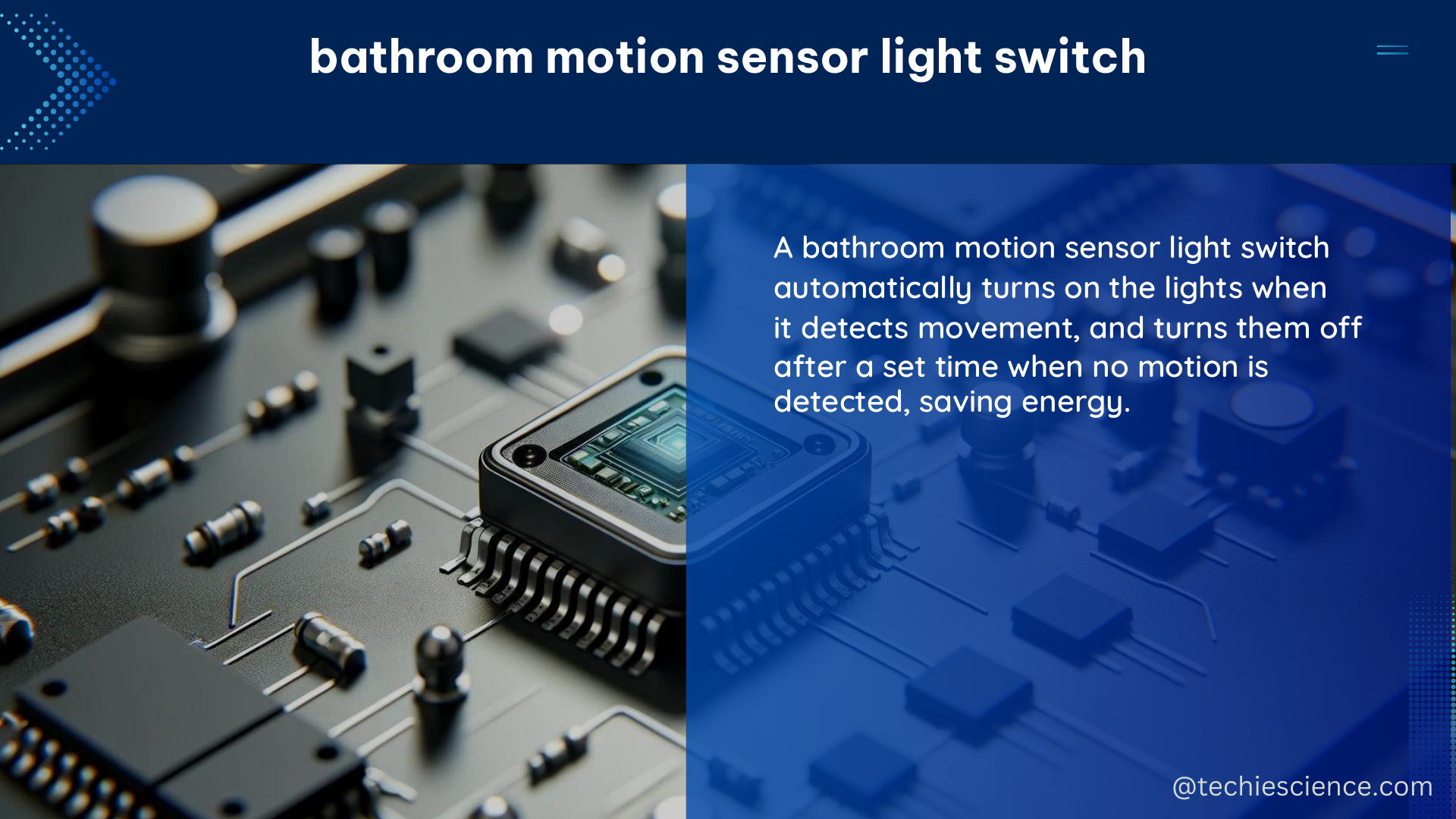Bathroom motion sensor light switches are a popular choice for homeowners and renters alike, offering convenience, energy efficiency, and enhanced safety. These devices automatically turn on the lights when someone enters the bathroom and turn them off when the room is vacant, providing a hands-free and hassle-free lighting experience. In this comprehensive guide, we’ll explore the key features, technical specifications, and installation process for bathroom motion sensor light switches, equipping you with the knowledge to make an informed decision and successfully install one in your own home.
Types of Sensors
The two most common types of sensors used in bathroom motion sensor light switches are:
-
Passive Infrared (PIR) Sensors: PIR sensors detect changes in infrared radiation, which is emitted by warm objects, such as the human body. These sensors are known for their reliable performance and relatively low power consumption.
-
Ultrasonic Sensors: Ultrasonic sensors use high-frequency sound waves to detect motion. They are particularly effective in detecting small movements and can work well in bathrooms with obstructions, such as shower curtains or partitions.
Each sensor type has its own advantages and disadvantages, so it’s important to consider the specific needs of your bathroom when choosing the right sensor.
Detection Range and Coverage

The detection range of bathroom motion sensor light switches can vary significantly, depending on the model and sensor type. Some sensors have a range of just a few feet, while others can detect motion from up to 30 feet away. When selecting a sensor, consider the size and layout of your bathroom to ensure adequate coverage.
For a typical bathroom, a sensor with a detection range of 15-20 feet is often sufficient. However, for larger bathrooms or those with unique layouts, you may need a sensor with a longer range. It’s also important to consider the sensor’s field of view, which can be affected by factors such as the mounting height and the presence of obstacles.
Response Time and Power Consumption
The response time of a bathroom motion sensor light switch refers to the time it takes for the lights to turn on after detecting motion. Faster response times, typically less than 1 second, are preferred for a more seamless and responsive user experience.
Power consumption is another important factor to consider, as bathroom motion sensor light switches can draw a significant amount of electricity, especially if they are left on for extended periods. Look for sensors with low power consumption, ideally less than 1 watt in standby mode, and those with programmable time-out features that automatically turn off the lights after a set period of inactivity.
Technical Specifications
When choosing a bathroom motion sensor light switch, consider the following technical specifications:
| Specification | Recommended Range |
|---|---|
| Detection Range | Up to 30 feet |
| Response Time | Less than 1 second |
| Power Consumption | Less than 1 watt in standby mode |
| Sensor Type | Passive infrared (PIR) or ultrasonic |
| Mounting Options | Wall-mount or ceiling-mount |
| Adjustable Time-Out | Yes |
| Warranty | At least 1 year |
Installation Process
If you’re interested in installing a bathroom motion sensor light switch yourself, follow these steps:
-
Choose the Right Sensor: Select a sensor that meets the specific requirements of your bathroom, considering factors such as the detection range, sensor type, and power consumption.
-
Turn Off the Power: Before beginning the installation, make sure to turn off the power to the circuit that controls the bathroom light to prevent any accidents or injuries.
-
Remove the Old Switch: Carefully remove the existing light switch from the wall, taking care to disconnect the wires.
-
Connect the Wires: Connect the wires from the bathroom light to the new motion sensor light switch, following the manufacturer’s instructions closely.
-
Mount the Switch: Secure the new motion sensor light switch to the wall, using the provided screws.
-
Test the Switch: Once the installation is complete, turn the power back on and test the motion sensor to ensure it is functioning correctly.
Conclusion
Bathroom motion sensor light switches offer a convenient and energy-efficient solution for lighting your bathroom. By understanding the key features, technical specifications, and installation process, you can make an informed decision and successfully integrate a motion sensor light switch into your bathroom, enhancing both the functionality and the overall user experience.
References
- Home Assistant Community: How do you guys reliably detect presence in a bathroom?
- Reddit: Bathroom light switch motion sensor conundrum
- Airbnb Community: Motion sensor switch in bathroom. Is it ok?
- Wattstopper: Wall Switch Occupancy and Vacancy Sensors
- DIY Stack Exchange: Bathroom Lighting Switch/Motion Sensor solution

The lambdageeks.com Core SME Team is a group of experienced subject matter experts from diverse scientific and technical fields including Physics, Chemistry, Technology,Electronics & Electrical Engineering, Automotive, Mechanical Engineering. Our team collaborates to create high-quality, well-researched articles on a wide range of science and technology topics for the lambdageeks.com website.
All Our Senior SME are having more than 7 Years of experience in the respective fields . They are either Working Industry Professionals or assocaited With different Universities. Refer Our Authors Page to get to know About our Core SMEs.